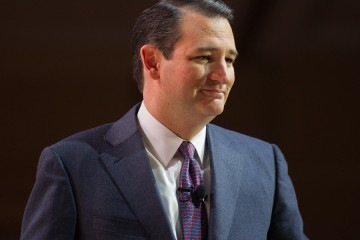Germany Proving Life With Less Fossil Fuel Easier Than You Think
©2015 Bloomberg News
NMLUF16K50XW
(Bloomberg) — Sitting in a control center that helps ensure uninterrupted power for 82 million Germans, Gunter Scheibner is proving that renewable energy from the sun and wind can be just as reliable as fossil fuels. Scheibner, in charge of keeping flows stable over 6,200 miles (9,976 kilometers) of transmission lines in eastern Germany, must keep power from solar and wind in harmony whether it’s sunny or overcast, windy or still. In doing so, he’s overcoming the great challenge for renewable energy: how to keep supplies steady when the weather doesn’t cooperate.
The system Scheibner manages has been so successful that Germany experiences just 15 minutes a year of outages, compared with 68 minutes in France and more than four hours in Poland. The model in Germany, the biggest economy in the world to rely so heavily on renewables, is being copied from California to China as wind and solar displace traditional fuels such as nuclear and coal. “Our job has become much more complex,” Scheibner said in an interview from the control center outside Berlin owned by 50Hertz Transmission GmbH, one of Germany’s four main grid operators. “It’s not an easy mission, and it will cost money. But if you are doing it consciously, then it will be doable. We have already come so far.” Still, the perception of renewable power as a fickle source that must be backed-up by fossil fuels, usually coal, remains. The Edison Electric Institute, an industry group based in Washington, and incumbent producers claim that variable flows from renewables will destabilize the power grid. Germany’s decade-long 120 billion-euro ($127.1 billion) investment binge to shift toward low-polluting energy forms is proving critics wrong. The country has raised its share of renewable power for electricity to about 28 percent, more than any source including lignite. In Scheibner’s region, it’s more than 40 percent. When transportation and heating are included, 9 percent of Germany’s energy comes from renewables, triple the U.S. level and six time what the U.K. uses, according to BP Plc.
Higher Concentrations
Researchers studying the grid say that a much higher concentration of renewables — 50 percent or more — is possible. That will come at a cost. Germany needs to invest 6.1 billion euros a year in its grid by the end of this decade to cope with additional wind and solar farms, the German Institute for Economic Research in Berlin estimated. “There’s a myth among opponents of renewable energy that you need 100 percent backup spinning all the time, and it’s utter nonsense,” said Michael Liebreich, founder of Bloomberg New Energy Finance. “Any grid needs flexibility. You can have a nuclear plant shut down by jellyfish or a coal plant closed because of a freeze and you can’t shovel in supplies fast enough.” The issue will be debated this week at the London-based researcher’s annual summit in New York, which starts Monday.
Edison’s Grid
Traditional grids invented by Thomas Edison draw supplies from a handful of generators fueled mostly by coal, nuclear and natural gas plants, which can run around the clock. Adding renewables means integrating smaller flows from dozens or even hundreds of plants spread across a wide area, with output that can change from moment to moment. At the 50Hertz control center one day late last month, Scheibner was tracking storms that brought snow in the morning, sleet, then short periods of sun as well as gusts of winds that quickly erupted and eased. Mistakes can be costly. An imbalance can lead to brownouts that damage motors and electronics. Power surges can explode transformers and trip circuit breakers. “We’re having some challenging weather,” Scheibner said, pointing to a screen showing red bands of storm moving across Germany. “There was a situation in April 2013 when we had a day-ahead forecast of blue skies. The next morning, most of southern Germany was blanketed by fog.”
Grid Stress
Not everyone is sold on the idea of incorporating more renewables into the grid. Arizona Public Service Co., which supplies power in the U.S. state with the most sunshine, won the backing of regulators to charge homeowners extra fees for solar systems. In Japan, seven utilities have announced limits for how much solar power their grids can absorb. Germany’s network connects four grid companies to 1,315 utilities selling 200 billion euros of electricity a year over 1.1 million miles of lines. The U.S. grid, described as the most complicated machine in the world, draws from 7,000 power plants. Coal producers and some utilities say intermittent power flows can’t replace the reliability of fossil-fuel plants. U.S. grid managers raised concerns that relying on wind, solar and gas alone could stress the grid, according to a November report from the North American Electric Reliability Corporation. “Coal can generate electricity 24/7 regardless of weather conditions,” said Laura Sheehan, a spokeswoman for the American Coalition for Clean Coal Electricity in Washington.
Better Batteries
To help smooth out the bumps in renewable supplies, manufacturers are developing a new generation of batteries that can store excess power for when the wind doesn’t blow or the sun doesn’t shine. Landis+Gyr owned by Toshiba Corp. is selling “smart-meters” that will help both consumers and utilities control demand. Siemens AG, General Electric Co. and ABB Ltd. make grid- control gear and interconnections that link national systems, allowing power from wind and solar farms to be spread over wider regions. “Very high levels of variable renewable energy can be accommodated both technically and at low cost,” said Morgan Bazilian, lead energy specialist at the World Bank who has studied the issue for two decades. Renewable energy poses challenges for day-to-day operations and long-term grid development, said Ashley Brown, executive director at Harvard University’s Electricity Policy Group.
25 Gigawatts
“It makes planning much more difficult,” Brown said. “It requires a lot more attention from grid operators.” Reliable estimates on the cost of a more flexible grid are hard to come by. The U.S. grid could absorb as much as 80 percent of its supplies from renewables by 2050 while keeping investment in transmission within the historical range of $2 billion to $9 billion a year, a 2012 study led by the National Renewable Energy Laboratory showed. In the U.K., the Imperial College Centre for Energy Policy & Technology suggested in 2006 that consumer power prices would rise 1 percent to fund the costs of adapting grids to intermittent power flows. “In 10 years, we will need to transport 25 gigawatts of renewable power from northern to southern Germany,” as atomic reactors in the south are closed, said Scheibner at the 50Hertz center. “We’re in a race against time.”
–With assistance from Rachel Morison in London, Chisaki Watanabe in Tokyo and Christopher Martin in New York.
To contact the reporters on this story: Stefan Nicola in Berlin at snicola2@bloomberg.net; Reed Landberg in London at landberg@bloomberg.net To contact the editors responsible for this story: Reed Landberg at landberg@bloomberg.net Jim Efstathiou Jr., Will Wade







No Comment